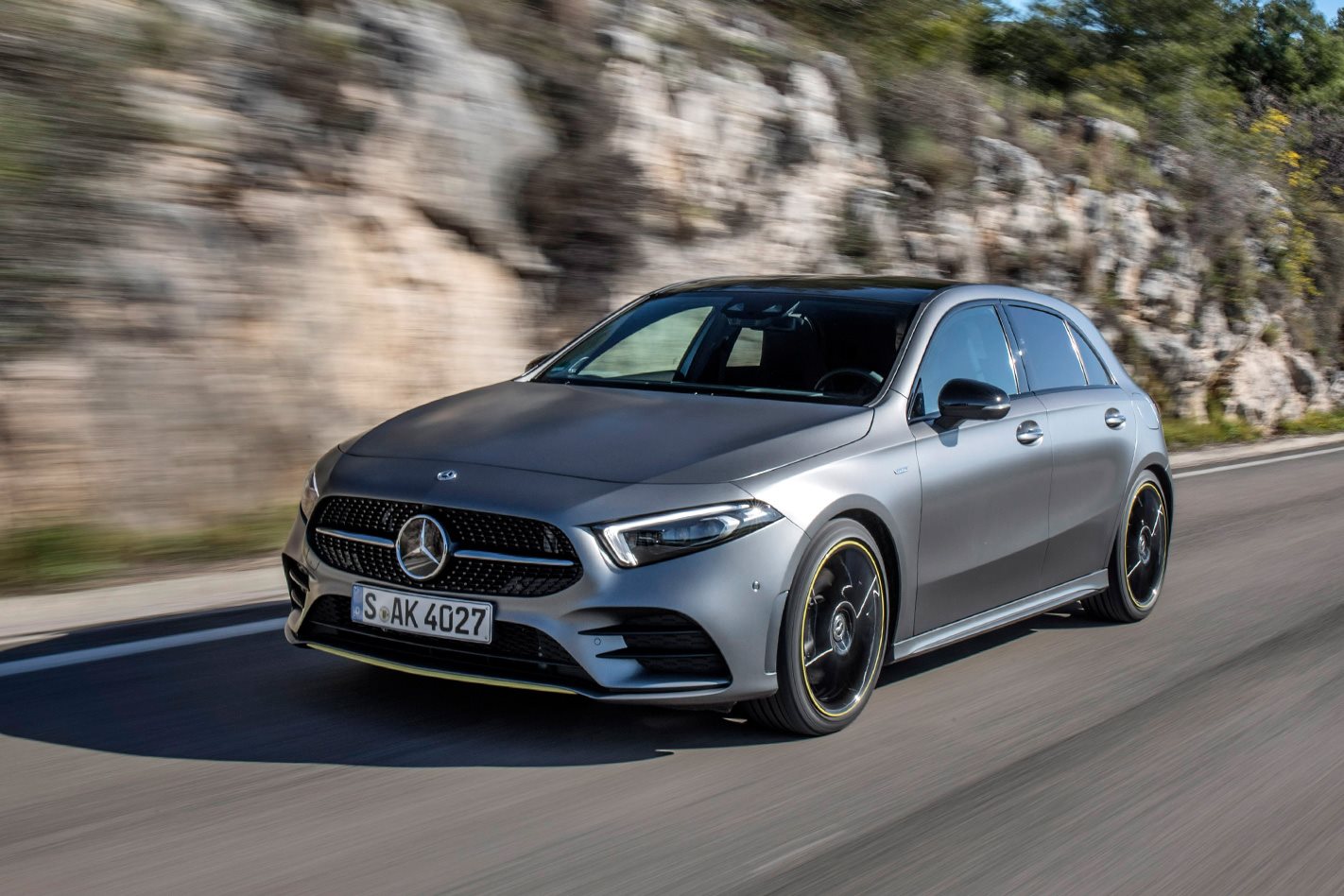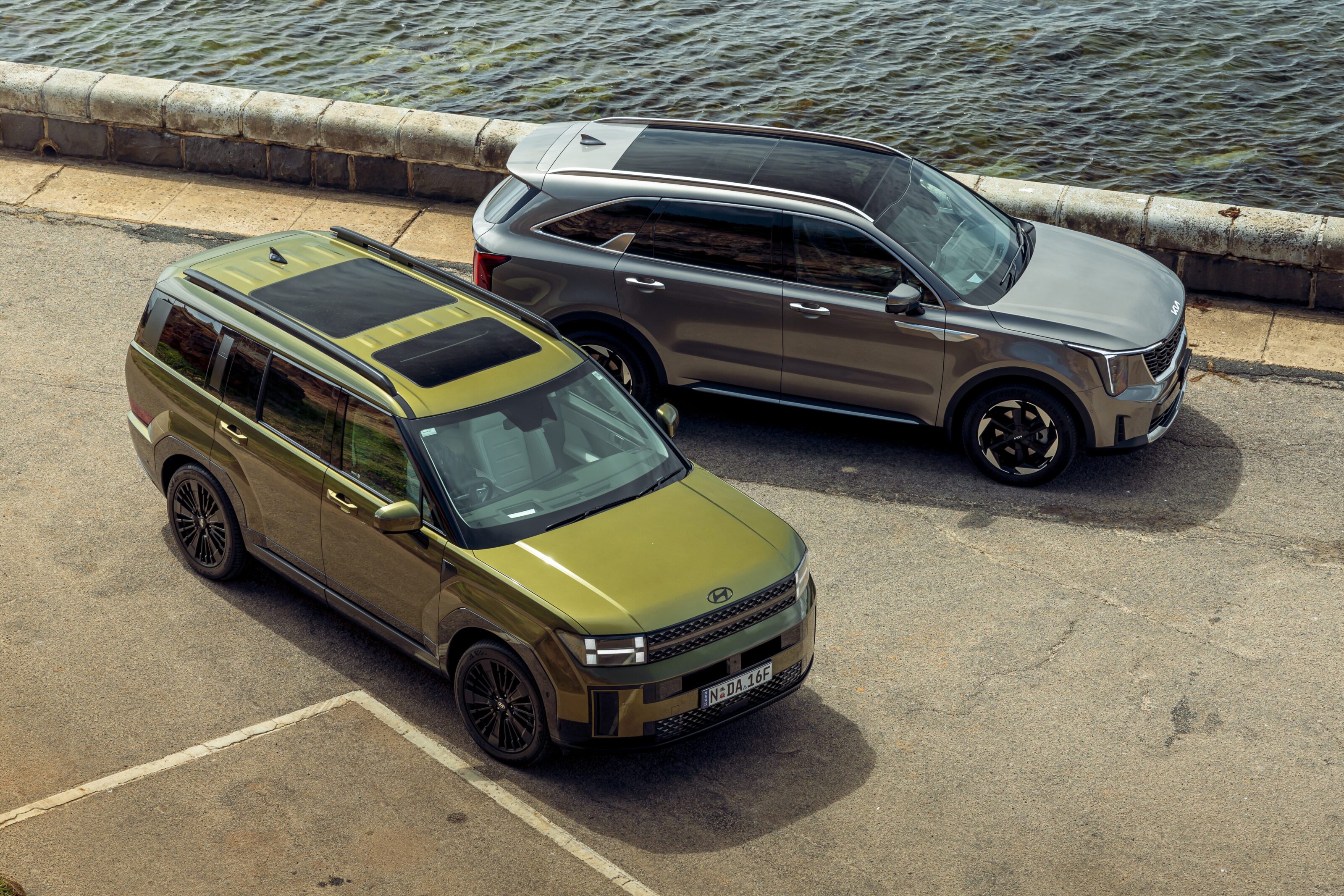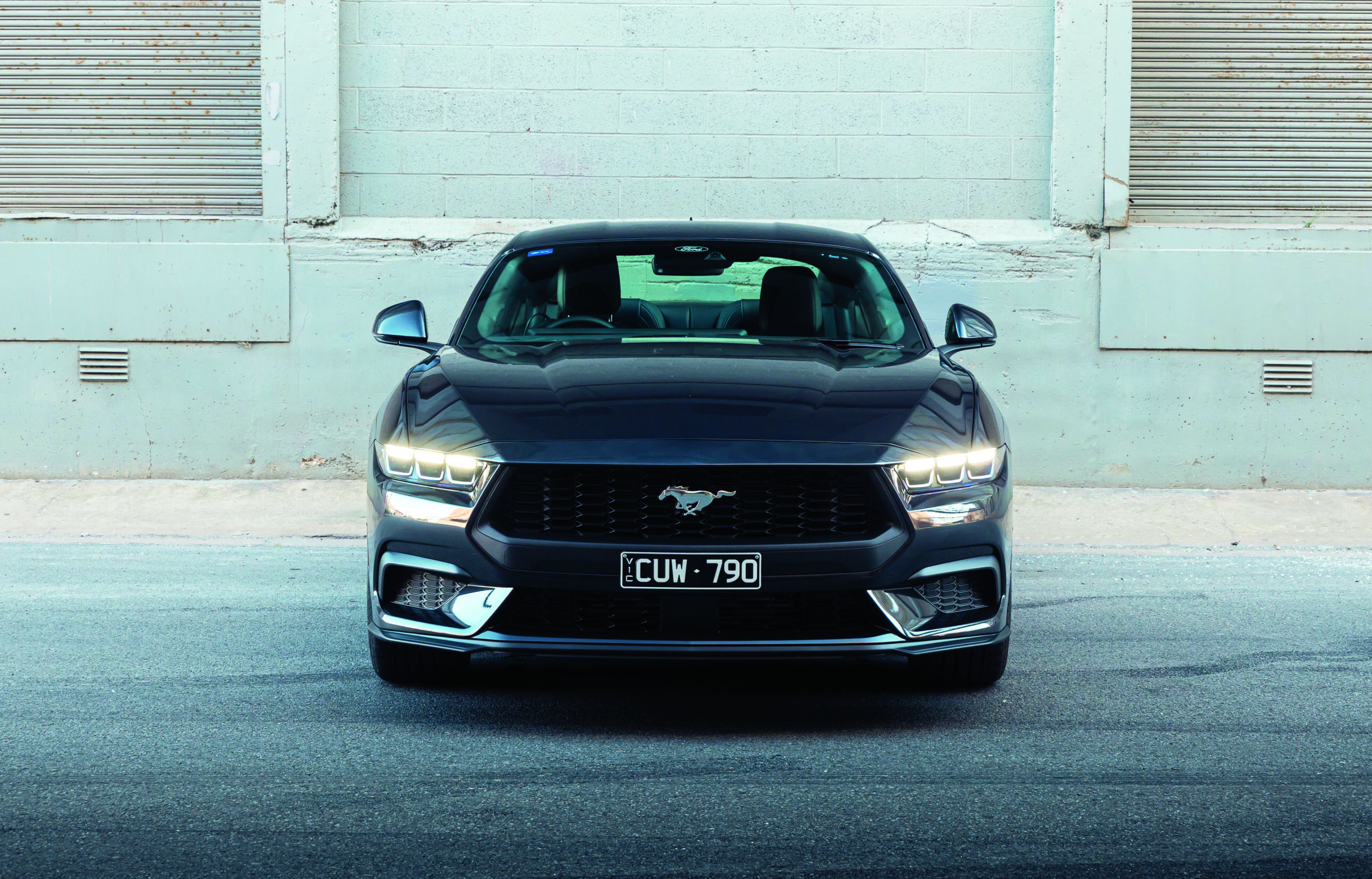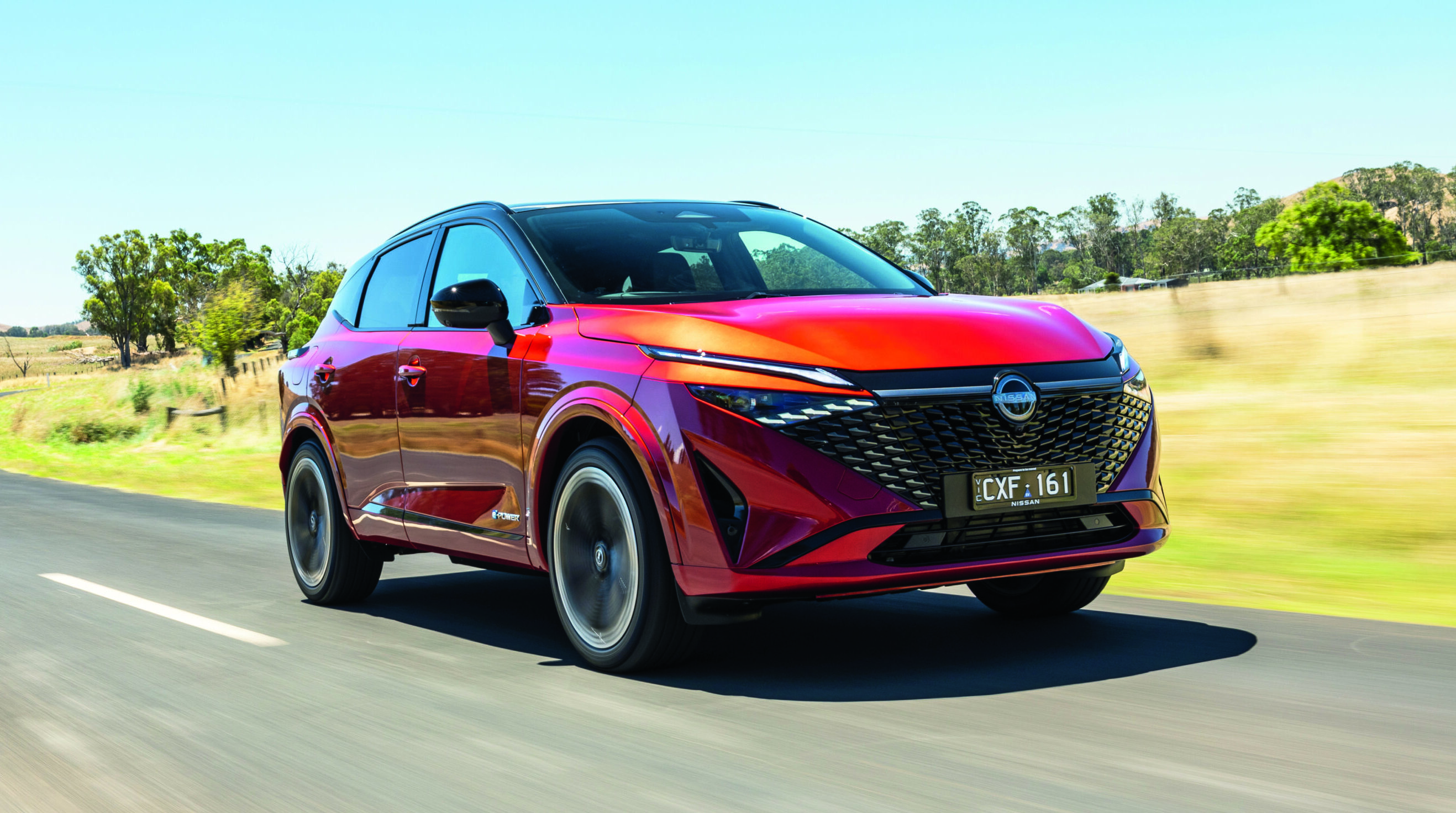With as much safety tech as an S-Class and greater connectivity smarts than any of its stablemates, the new-generation Mercedes-Benz A-Class aims for the stars
WHAT IS IT?
The fourth generation in an A-Class lineage spanning 21 years and two distinct schools of thought in design terms – tall, innovatively packaged and utility focused (first and second gen); conventional but classy and more socially acceptable (generations three and four). Needless to say, the lower, sportier A-Class ethos has not only proven far more successful in sales terms but has also brought youthfulness to Mercedes-Benz’s buyer profile.
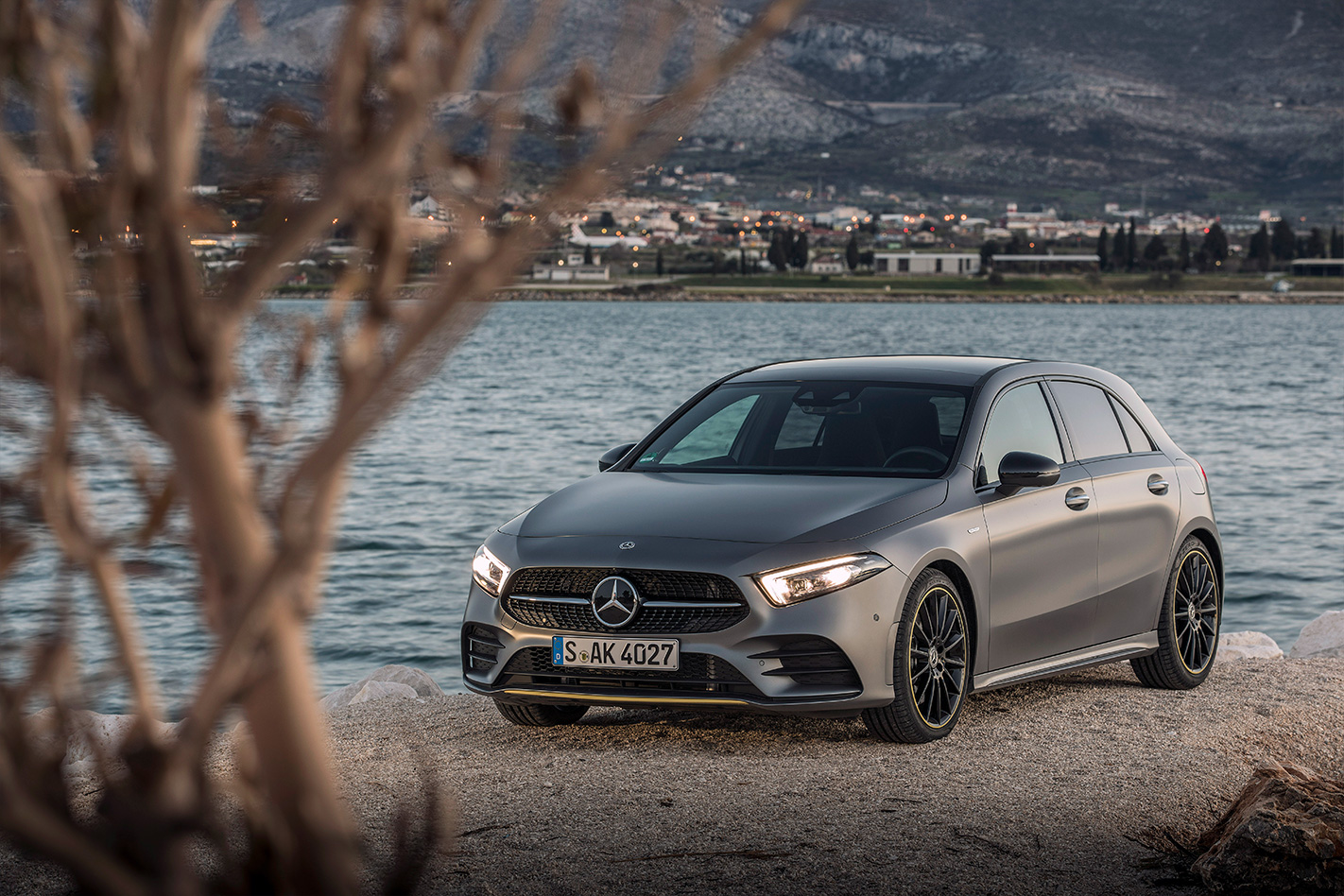
The new A-Class is the very definition of Mercedes-Benz’s contemporary approach to introducing fresh technology. Long gone is the trickle-down approach from generations past. These days, even the smallest three-pointed-star hatchback gets a chance to boast equipment, features and even engines all set to appear in larger models further down the track.
MAIN RIVALS
Audi A3, BMW 1 Series, Infiniti Q30, Lexus CT200h, Volkswagen Golf, Volvo V40 and, when a plug-in hybrid version appears, Toyota Prius and Tesla Model 3.
THE WHEELS VERDICT
More refined and more accommodating, while offering more hatch for the money than its predecessor, the fourth-gen A-Class is all about its high-glam cabin with dominating widescreen display. It’s a good car – especially the fizzy A250 with forthcoming 4matic all-wheel-drive traction – that possesses a breadth of talent lacking in the old W176 generation. It may have lost some styling character and proportion, and its cornering bite isn’t as sharp, but that won’t stop it from being the coolest premium hatch on the block. For now.
PLUS: Cutting-edge cabin technology and useability; Ginza-inspired interior glitz; improved space, storage and vision; A250’s performance; dual-clutch transmissions’ smoothness MINUS: Lack of front-end bite; aloof steering feel; no standard-setter for ride quality, even on adaptive dampers; A200 lacks mechanical character
THE WHEELS REVIEW
MORE THAN 20 years since the infamous ‘moose test’ threatened to completely derail the original W168 Mercedes-Benz A-Class, we’re back for round four – a new generation of A-Class that has traded some of its predecessor’s sporting flourish for a more well-rounded, more technology- and safety-driven hatch destined to knock its competitors for six with a single feature. Its interior.
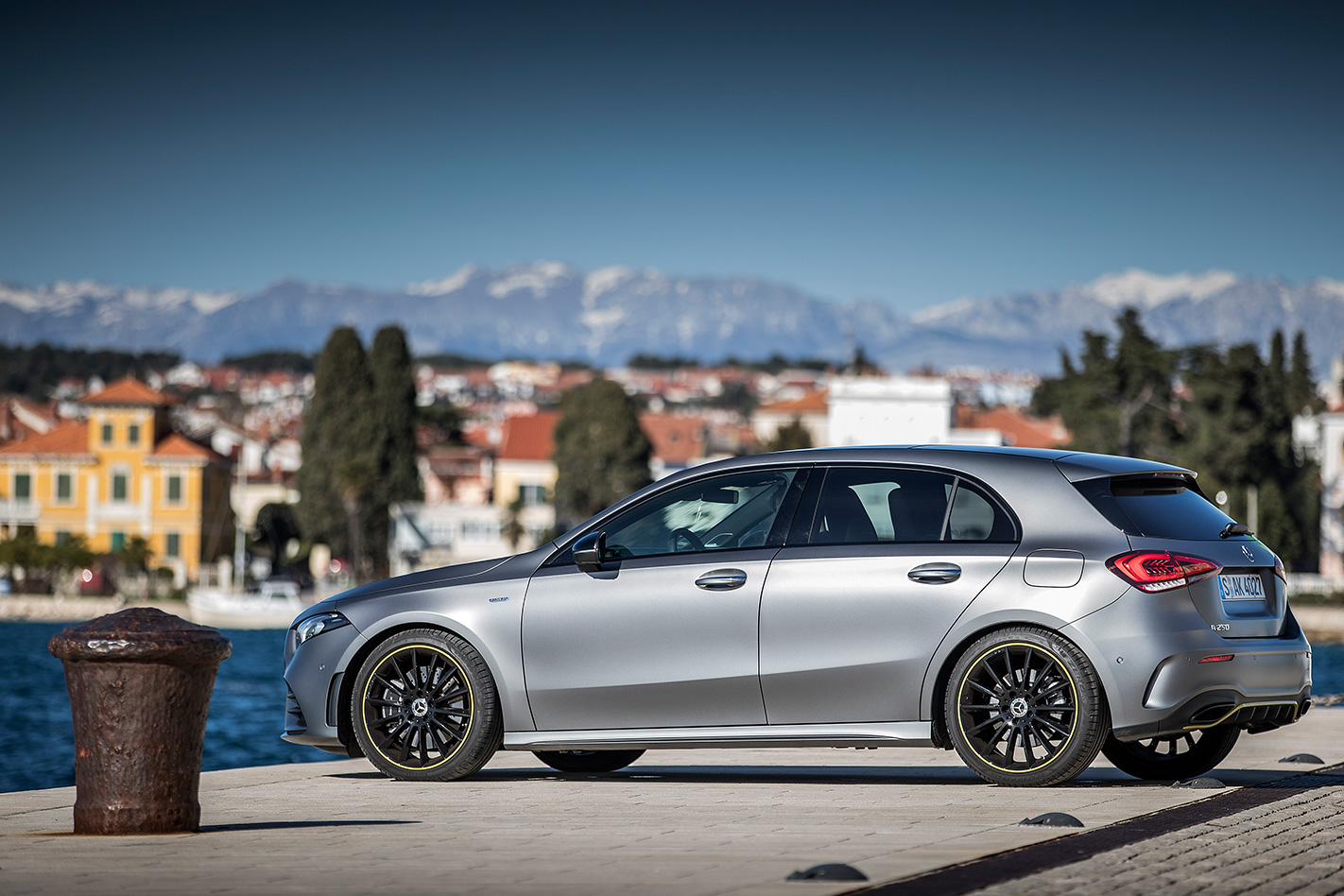
Under development since late 2015, MBUX (for Mercedes-Benz User Experience) appears more daunting than a reacquaintance with calculus, but it’s a stunningly simple and intuitive system. Based around a series of interconnected touch interfaces – the left and right wheel-spoke buttons, the central touchscreen and a centre-console-mounted touchpad – all of which offer general control of the same functions, with specific specialities, it’s a system inspired by the touch concept from smartphones. Three-dimensional control allows you to swipe or press applications, even on the steering wheel, yet there’s a commonality to the positioning of key controls (like the cog-shaped ‘set-up’ icon) and their action that links everything together seamlessly.
It’s also updatable (even over the air) and intelligent, with voice control based around natural speech recognition, activated either by a tradition button or by calling out “Hey Mercedes”. Dubbed ‘Linguatronic’, you can ask the system Siri-like questions such as “will it be sunny in Vladivostok tomorrow?” or utter statements like “I am cold”, resulting in a toasty 24 degrees on the climate control. Benz claims it needs two to five “utterances” to properly start learning your voice.
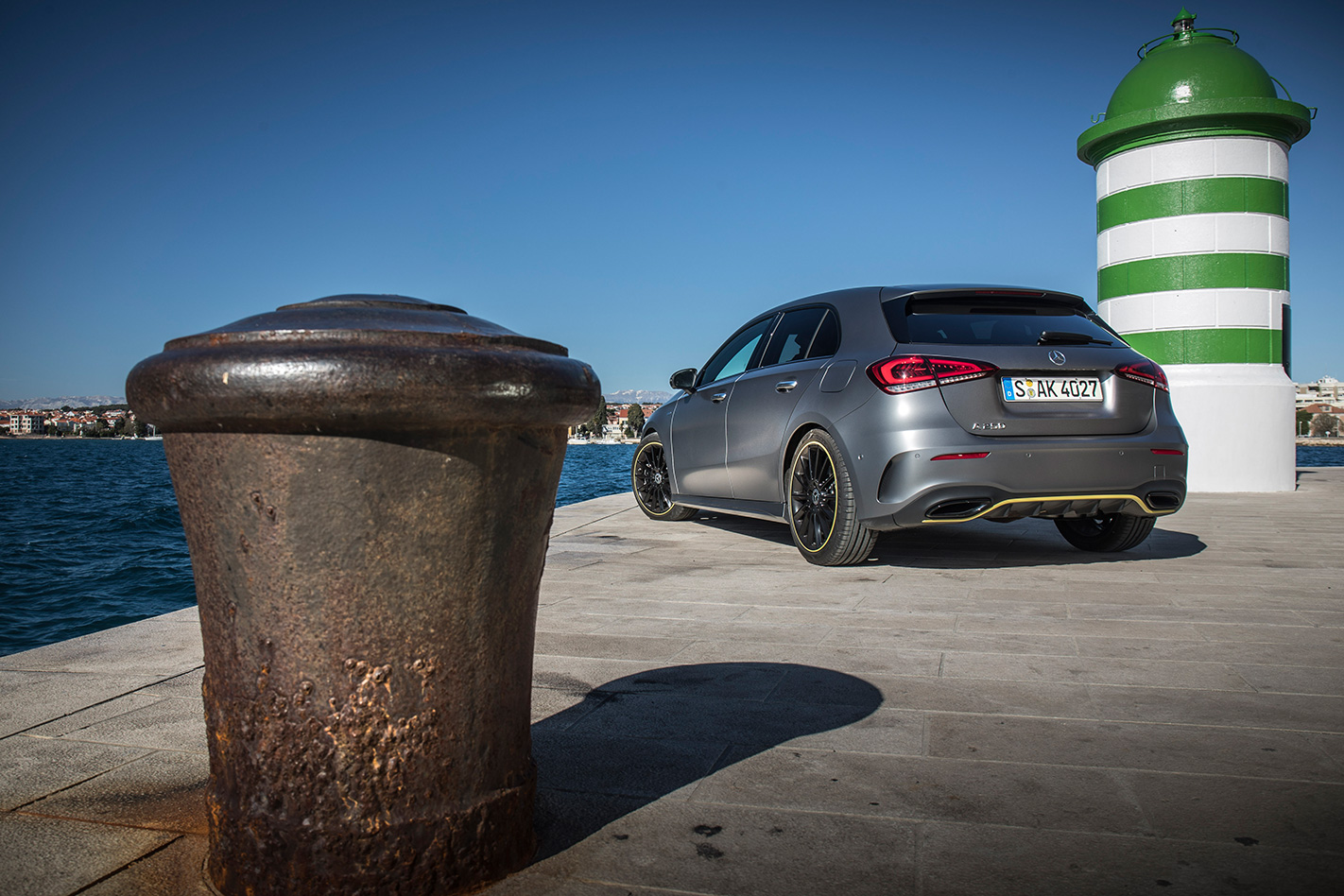
Riding on the coat tails of MBUX is a newfound level of solidity and maturity that permeates the new A-Class. Gone are the rattles and trim squeaks of the old W176, along with its short-cushioned, hemmed-in rear seat and abrasive ride, in lieu of a far more effective four seater with significantly lower levels of wind and road noise, and much-improved fields of vision (by a claimed 10 percent). Indeed, when we asked Frank Weinert, Overall Vehicle Development Engineer for Compact Cars, what his favourite part of the new A-Class is, he replied “its vision”. Not the class-best aerodynamics (0.25Cd for a base-spec A180d on 16s, though 0.32 on a big-wheeled AMG-Line car), or the slight weight reduction (by up to 40kg), or even the comprehensive overhaul of the MFA platform’s suspension.
And therein lies the first hint of the essence of the new-gen A. No longer is the A-Class a complete rejection of its nerdy, sandwich-floored, innovatively packaged ancestors like the previous W176 (2012-18) was. That car simply tried to be cool. This time, the A is all about being more effective, more efficient and a better foundation to build on in the future.
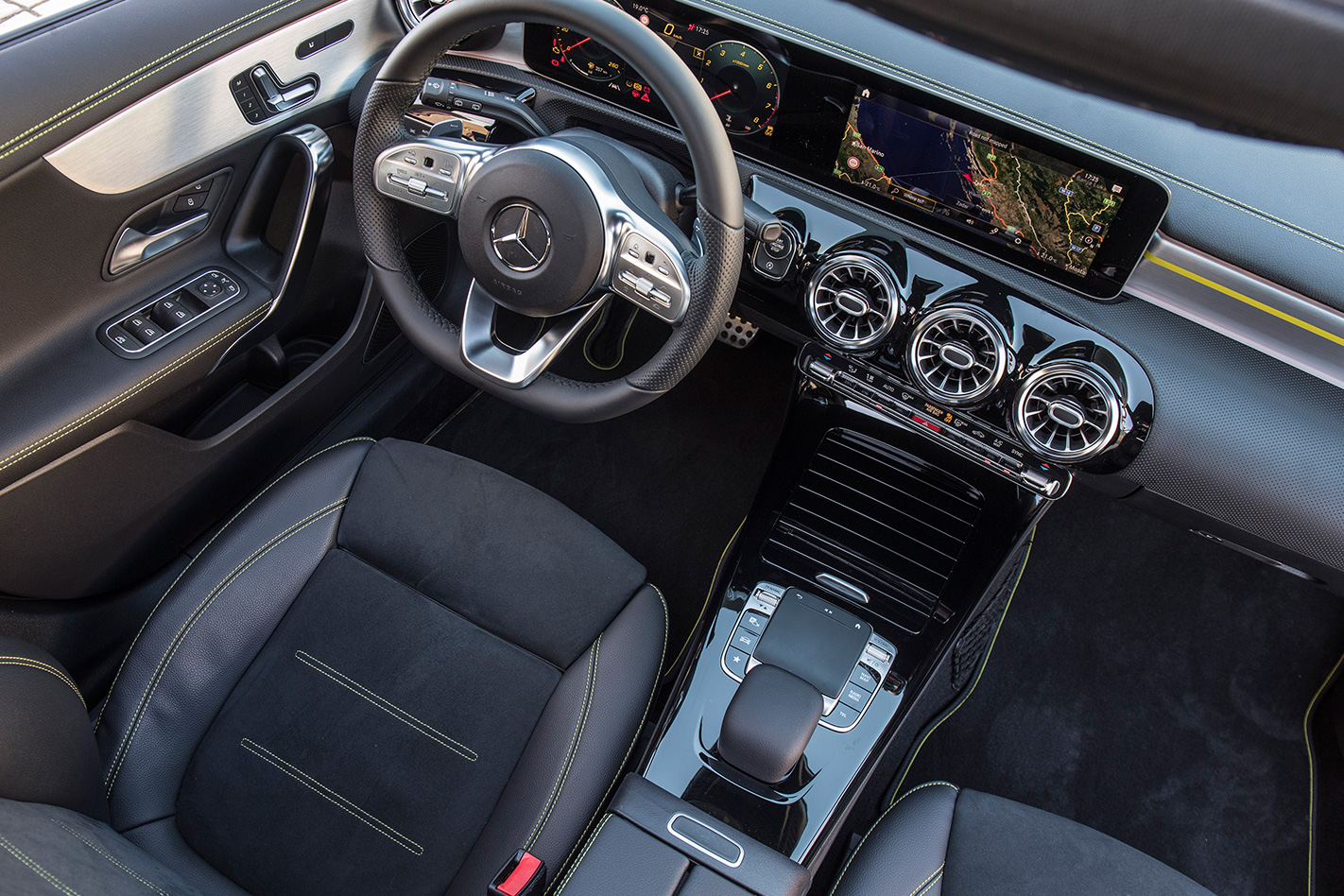
Unfortunately, the turbo-petrol 1.3 lacks the raspy crispness of the M270 1.6 it replaces. It’s all about reduced consumption and CO2 reduction – enhanced by (imperceptible) cylinder deactivation and ‘Nanoslide’ graphite coating of the cylinder walls for optimised friction and high-wear resistance – though the new A200 donk does have its good points. Decent performance (0-100km/h in 8.0sec, 225km/h top speed), a slightly rorty induction flavour around the 3000rpm mark, and amply tractable torque help this engine transcend its modest capacity and 6300rpm rev limit. This is an admirable workhorse of an engine, in time-honoured Daimler-Benz tradition, rather than something to savour. A sweeter top-end would definitely be welcome.
The 1991cc M260 engine in the A250 is much stronger, punching out 165kW/350Nm. While this is a honed version of the former A250’s 2.0-litre turbo-petrol, tied to Mercedes’ own seven-speed 7G-DCT dual-clutch ’box, its overall transmission response is much improved, and feels remarkably similar to the operational smoothness of the A200’s drivetrain.
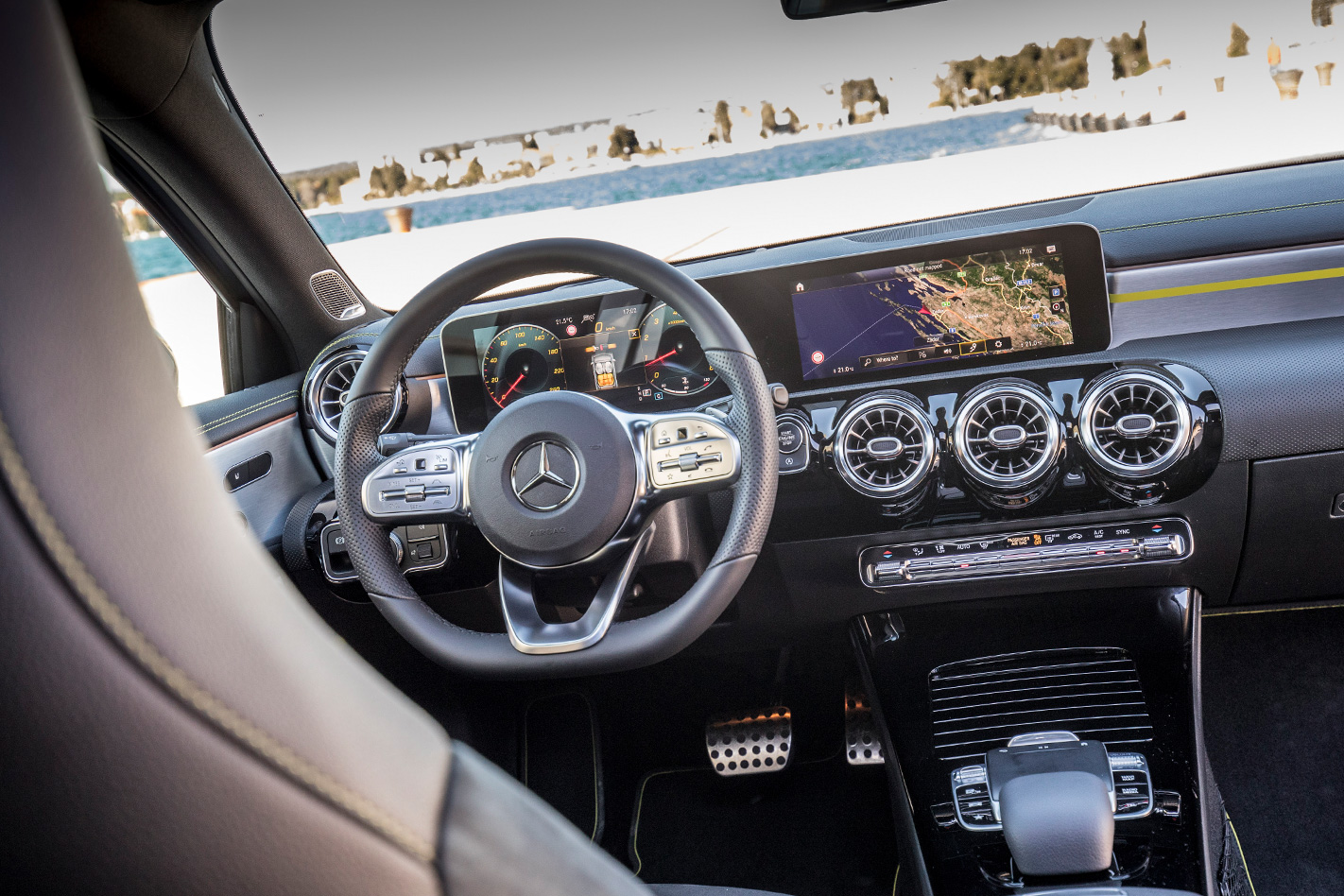
Clad in ‘Edition 1’ warpaint, the A250 is by far the sexiest new-gen A-Class. Not only does it sound muscular – even with a synthesised induction note amplified through its stereo speakers when ‘Drive Select’ is in Sport – it also scores the premium chassis set-up (adaptive dampers and a multi-link rear axle, now mounted on a subframe with rubber bushings to improve refinement).
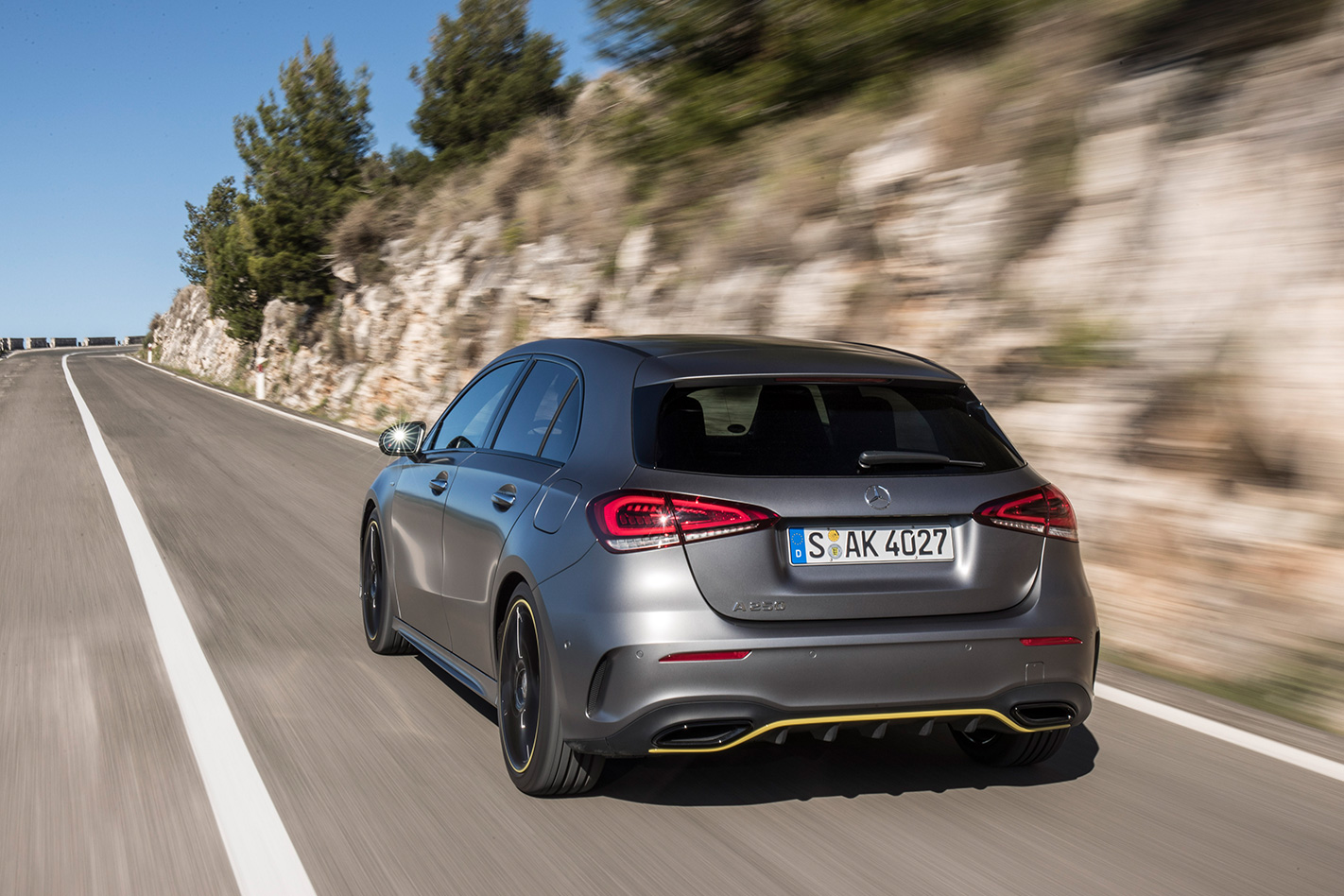
While the W177 A-Class shares its MFA platform and fundamental suspension arrangement with its predecessor, something unexpected has occurred at the back end. On entry-level models there’s now a torsion beam, for weight, cost and packaging reasons. According to Frank Weinert, “agility is better than its predecessor with multi-link”, adding that Mercedes benchmarked “not the VW/Audi product” but an unnamed torsion-beam hatchback we’re almost certain is the Peugeot 308 (like Mazda for its next-generation 3). Cleverly, the torsion-beam A-Class shares the same mounting points as the multi-link version’s trailing arms, as well as its rear damper position, and assists with packaging the batteries for the rumoured (and almost certain) plug-in hybrid A-Class. Disappointingly, no torsion-beam cars were at the launch.
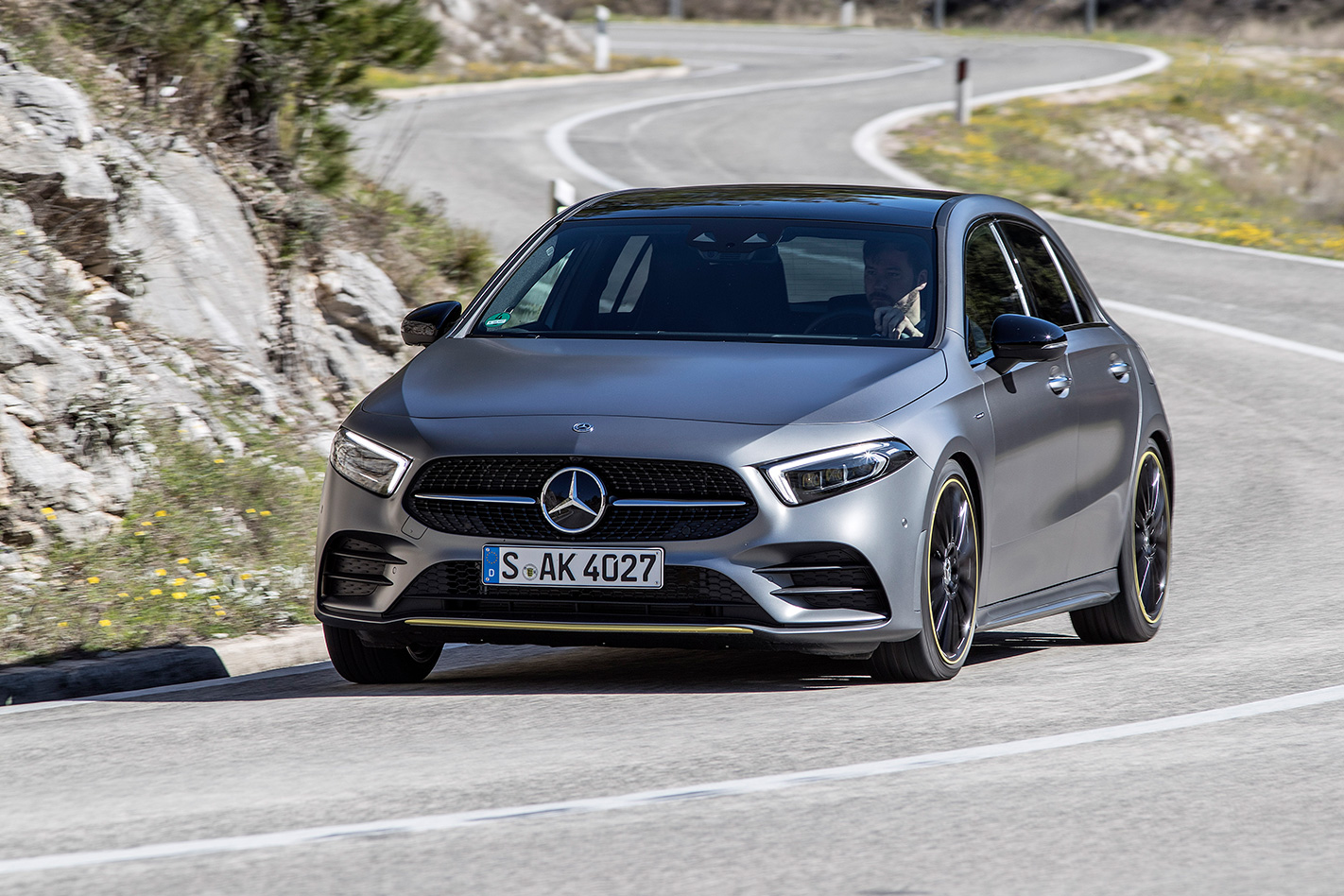
Unlike blank-canvas Euro cars, Oz-bound A-Class variants will arrive highly specced. Our base level will include the full MBUX works burger and widescreen goodness, as well as a nine-speaker 225-watt stereo with subwoofer, nine airbags, LED headlights, keyless start, sat-nav, a rear camera and quite funky aero-enhanced 18-inch alloys wearing 225/45R18 Michelin Pilot Sport 4 rubber.
A Driver Assistance pack including adaptive cruise will standard on A250, optional on others, though what won’t be negotiable is the abruptness of the lane-keep assist. You stray onto a dividing line and it’ll scold you in a very Germanic fashion, clamping the brakes quickly while nudging the car back into line. Subtle it isn’t.
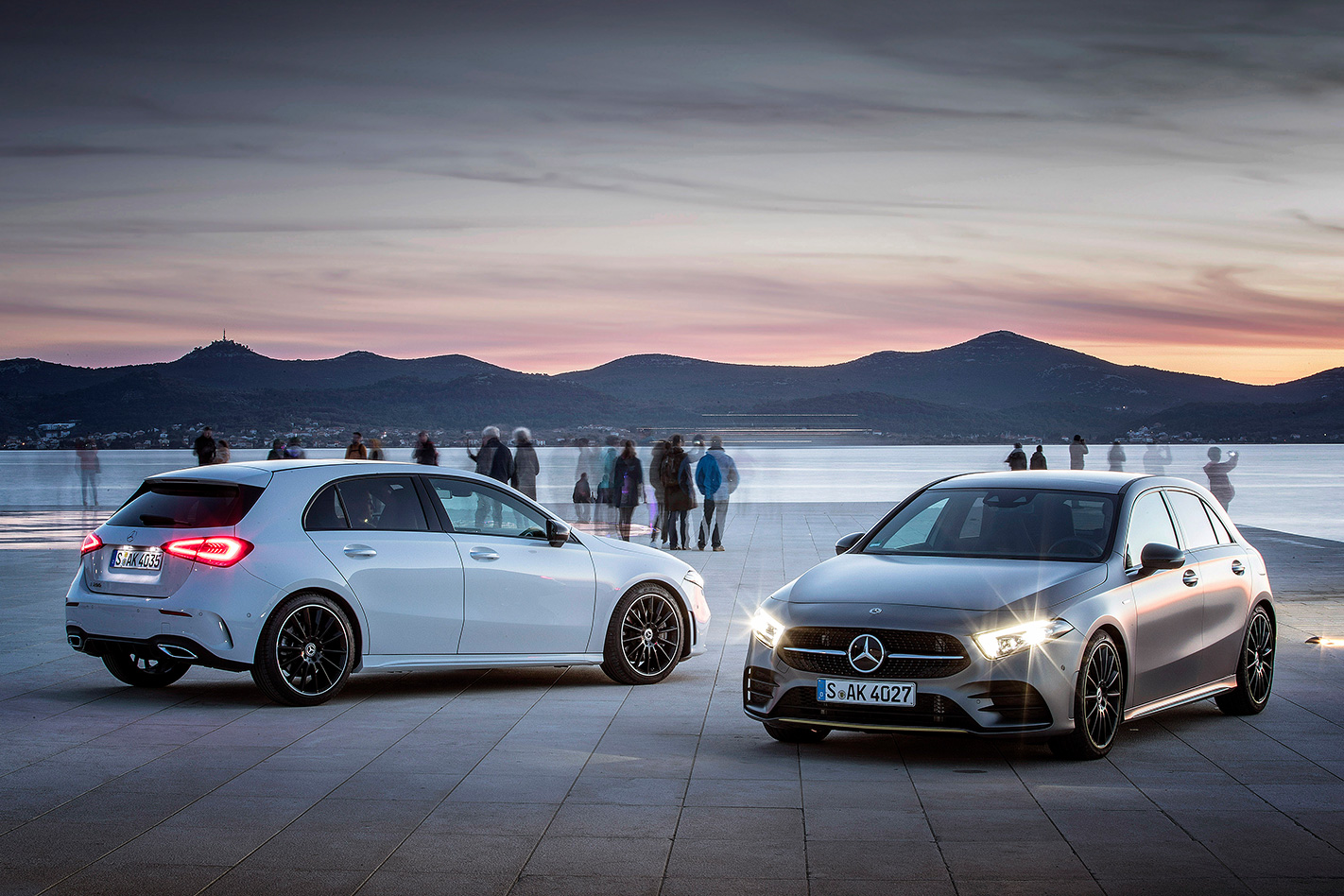
SPECS
Model: Mercedes-Benz A250 Engine: 1991cc 4cyl, dohc, 16v, turbo Max power: 165kW @ 5500rpm Max torque: 350Nm @ 1800rpm Transmission: 7-speed dual-clutch L/W/H: 4419/1796/1445mm Wheelbase: 2729mm Weight: 1380kg 0-100km/h: 6.2sec (claimed) Economy: 6.5L/100km (EU) Price: $55,000 (estimated, 4matic) On sale: December

